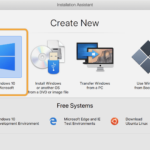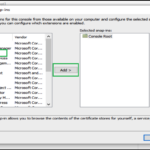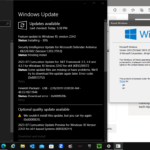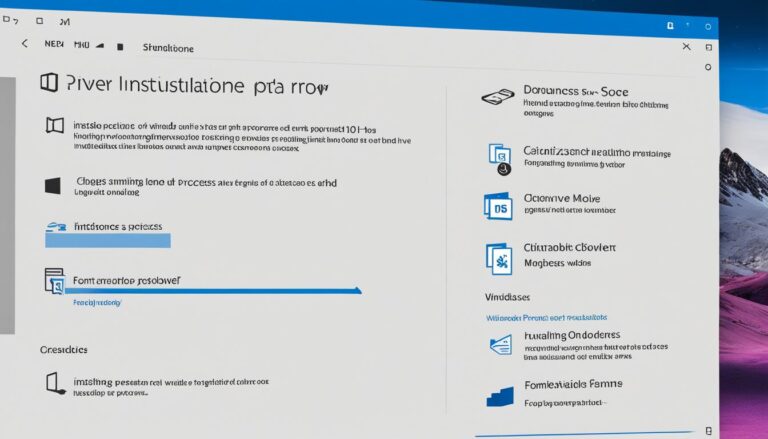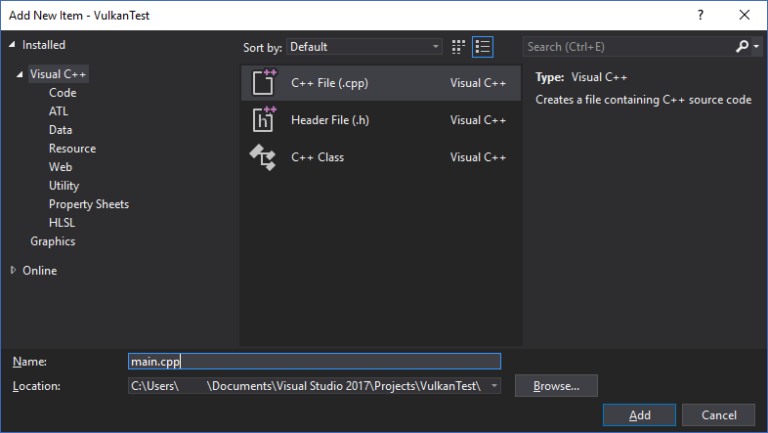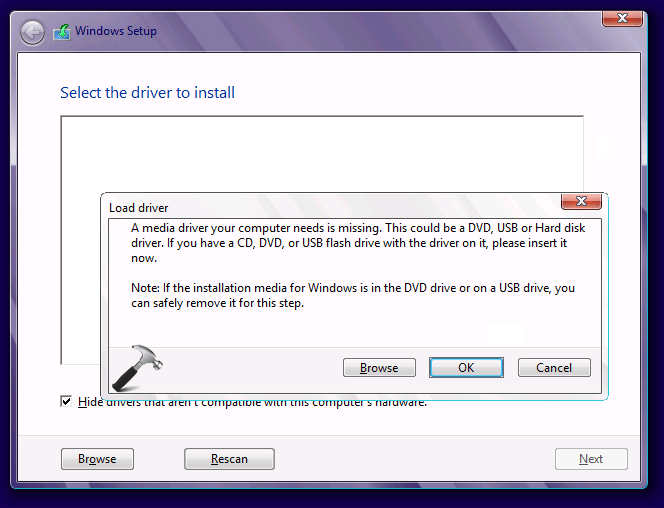Want to make your Windows 10 computer work faster? AVX2 is what you need. It’s a set of instructions that boosts your computer’s speed and efficiency. This guide will show you how to activate AVX2. By doing so, you’ll improve your computer’s performance, especially for DSP and plugin development.
First, let’s talk about what AVX2 is. AVX2 stands for Advanced Vector Extensions 2. It’s made for processors that can handle it. AVX2 enhances your computer’s ability to do several math operations at once. This means faster and more efficient calculations for tasks heavy on floating-point math.
To use AVX2, check if your processor supports it. Most new processors in the last ten years likely have AVX2. To check, look up your processor’s specs or its manual. Remember, AVX2 needs a processor that can handle specific instructions and supports several technical features.
If your processor is AVX2-ready, you’re set to enable it on Windows 10. Make sure your computer meets the hardware needs and that your processor supports AVX2. Then, follow our step-by-step guide to activate AVX2 and boost your computer’s performance.
After setting up AVX2, make sure it’s working properly. Test it by running apps or tasks that use AVX2 instructions. You should also check if your computer’s processor is using AVX2 effectively by monitoring its performance.
While AVX2 can greatly improve performance, there are things to consider. Some CPUs might not work with AVX2. This could cause apps to crash if they use AVX2 instructions. Always check if AVX2 will work on your computer. For many DSP tasks, basic AVX support might be enough. AVX2 is mostly about improving integer math.
Turning on AVX2 can speed up your Windows 10 significantly. It’s especially true for non-SDK style .NET projects, making them build faster. Performance gains vary based on your project and hardware. Keep optimizing your code to get the most out of AVX2.
In conclusion, activating AVX2 on Windows 10 can majorly optimize performance for math-heavy tasks. Follow this guide, consider compatibility, and keep tuning your code. With AVX2, you’ll see real improvements in how your computer works.
What is AVX2?
AVX2 stands for Advanced Vector Extensions 2. It is an extension for processors that support it. It makes parallel mathematical operations better, leading to quicker and more efficient calculations. AVX2 offers big improvements for tasks needing a lot of floating-point calculations, like DSP and plugin development.
AVX2 expands upon the original AVX and adds new features to boost performance. A key upgrade is its 256-bit vectors processing ability. This doubles the power compared to AVX. It means more calculations can happen at once, boosting performance significantly.
Also, AVX2 brings new instructions for integer operations. This means better support for math-based computations. These instructions help speed up data processing, especially in tasks needing complex algorithms.
Benefits of AVX2
AVX2 offers several benefits:
- Improved Performance: It speeds up computations significantly through parallel processing. This results in quicker execution of complex mathematical tasks.
- Enhanced Efficiency: It uses CPU power better and cuts down on processing time for tasks.
- Optimized Floating-Point Calculations: With bigger vector sizes and a better instruction set, AVX2 improves floating-point calculations. This is great for apps that rely on complex math.
- Compatibility with Existing Software: AVX2 works with AVX, meaning older apps can still get performance boosts on compatible processors.
With its advanced features and performance upgrades, AVX2 is vital for developers with computationally heavy tasks. It offers better efficiency and faster processing times.
Checking Processor Compatibility
Before you try to install AVX2 on Windows 10, make sure your processor can handle it. Most processors from the last ten years should support AVX2. Check your processor’s details or the manufacturer’s info to be sure.
Remember, AVX2 works with processors that match x86 or x64 sets. They must also support PAE, NX, SSE2, CMPXCHG16b, LAHF/SAHF, and PrefetchW.
If you’re not sure about your processor, here’s how to check:
- Open the Start menu and look up “System Information”. Then, click to open it.
- In there, go to the “Processor” part. It shows your processor’s model, build, and what it supports.
- Search for any mention of AVX2 in the details. If you find it, your processor is good to go with AVX2.
- If you can’t find what you need there, check your processor’s official documentation. Visit the maker’s site or look up your processor model for specs.
Once you know your processor works with AVX2, you’re all set to enhance your Windows 10 with its capabilities.
Recommended Processors with AVX2 Support
| Processor Model | Architecture | AVX2 Support |
|---|---|---|
| Intel Core i7-9700K | x86-64 | Yes |
| AMD Ryzen 7 3700X | x86-64 | Yes |
| Intel Core i5-11600K | x86-64 | Yes |
| AMD Ryzen 5 5600X | x86-64 | Yes |
There are many processors out there that support AVX2. These are just a few examples. Check out specs and reviews to find the best one for you.
Once your processor is confirmed to support AVX2, you can go ahead and enable it in Windows 10.
Enabling AVX2 in Windows 10
To turn on AVX2 in Windows 10, first check if your system is up to the task. Your processor must support AVX2. Follow these steps once you know your system is compatible:
-
Open the Start menu and hit “Settings.”
-
Go to “System” in the Settings window.
-
Find and click “About” on the left side.
-
Look for “Device specifications” and click “Device Manager.”
-
In Device Manager, find and expand “Processors.”
-
Right-click your processor to see “Properties.”
-
Hit the “Driver” tab in the Properties window.
-
Click “Update Driver” if it’s there and follow the screen steps. This makes sure AVX2 support is turned on in your processor.
-
Restart your computer to finish the setup.
After doing these, AVX2 will work on your Windows 10. Now, your system is ready for better performance in tasks like DSP and plugin creation.
Verifying AVX2 Installation
After enabling AVX2 in Windows 10, you must check it works right. Try running apps or tasks that need AVX2, like DSP or intense plugins. Watch the speed and efficiency increase as you use them.
Use applications leaning on AVX2 to see your system’s improved performance. Be it tough maths or heavy graphics, AVX2 boosts your work speed.
Also, it’s smart to look at your system’s processor use. Do this via task manager or performance software. This way, you’ll know for sure AVX2 is in action, upgrading your system’s speed.
| Benefits of Verifying AVX2 Installation | How to Verify |
|---|---|
| Ensuring successful installation | Run AVX2-dependent applications |
| Monitor system performance | Check processor usage |
By doing these things, you can confirm AVX2 is set up in Windows 10. Enjoy the faster performance it provides.
Potential Issues and Considerations
Turning on AVX2 can boost your system’s performance significantly. However, remember that not all CPUs support AVX2. If you try to run AVX2-enabled code on these CPUs, the software might crash. It’s wise to ensure your machine can handle AVX2 before proceeding. Additionally, AVX2 mainly deals with whole numbers, while AVX focuses on floating-point numbers. For most DSP tasks, just having AVX is enough.
It’s vital to check if your CPU is compatible with AVX2 before using it. Not every CPU can work with AVX2, and using it on the wrong one could crash your software. To avoid problems, double-check your machine’s compatibility. Also, it’s smart to add a check in your installer for this. Taking these steps can prevent issues and ensure everything runs smoothly.
Also, remember that AVX2 is best for integer math, while AVX is better for floating-point operations. This means that for many DSP jobs, AVX is all you need. Knowing what your application requires and the abilities of your hardware is essential. Making informed choices about using AVX2 can help you use your system more effectively.
In summary, AVX2 can improve performance but needs careful consideration. Make sure your CPU supports it and understand your application’s needs. Doing compatibility checks can protect against software issues. This way, you maximize your system’s performance without running into problems.
Performance Impact and Future Considerations
Turning on AVX2 in Windows 10 can make things much faster, especially for non-SDK style .NET projects. Tests have shown that build times can be cut by half.
Yet, the benefits can change depending on your project’s size, the modified files, and your computer’s specs. Although AVX2 boosts speed, you should still refine your code to get the best results.
Developers can use AVX2’s enhanced instructions to speed up their work. This reduces how long it takes to finish projects, leading to happier developers and users.
Future Considerations
As tech evolves, developers must keep up with new hardware and software changes. AVX2 shows how specific technologies can improve performance.
When you’re thinking about new hardware or software, consider how it will affect your work. By staying current with tech developments, developers can use the best tools for top-notch results.
“AVX2 has changed how we work, making development faster and cutting down on build time. This leap in efficiency lets us complete projects quicker.”
Conclusion
Turning on AVX2 in Windows 10 boosts performance, especially for math-heavy tasks. Follow the steps in this article carefully. Think about compatibility and making your system run best.
Keep an eye on and tweak your code for better results. With AVX2, those using Windows 10 will see big improvements in how their applications perform.
FAQ
How do I install AVX2 on Windows 10?
To get AVX2 up and running on Windows 10, check if your CPU supports it first. Then follow the guide in the article.
What is AVX2?
AVX2 boosts performance and efficiency on Windows 10. It’s great for tasks like DSP and creating plugins.
How can I check if my processor supports AVX2?
Look at the specs of your processor or the documentation from the maker. Make sure it’s compatible with x86 or x64 and supports special features like PAE and NX.
What are the hardware requirements for enabling AVX2 in Windows 10?
Your computer needs to fit certain criteria to use AVX2. This includes a suitable processor that works with x86 or x64 and has certain capabilities like SSE2 and PrefetchW.
How do I enable AVX2 in Windows 10?
Confirm your system can handle AVX2. Then, just follow the instructions in this guide.
How can I verify if AVX2 is successfully installed on Windows 10?
Check if AVX2 is working by using AVX2-heavy apps. See if they run faster and more smoothly.
Are there any potential compatibility issues with AVX2?
Yes, some CPUs don’t support AVX2, leading to crashes. Always check your CPU’s capabilities and prepare your installer accordingly.
What is the performance impact of enabling AVX2 in Windows 10?
Turning on AVX2 can significantly boost your machine’s speed. Tasks like building .NET projects might get up to 50% faster. But, results can vary based on many factors.
How should I optimize my code to make the most out of AVX2?
Continuously refine your code for top performance with AVX2. Think about your project’s complexity, the hardware specifics, and other factors.

